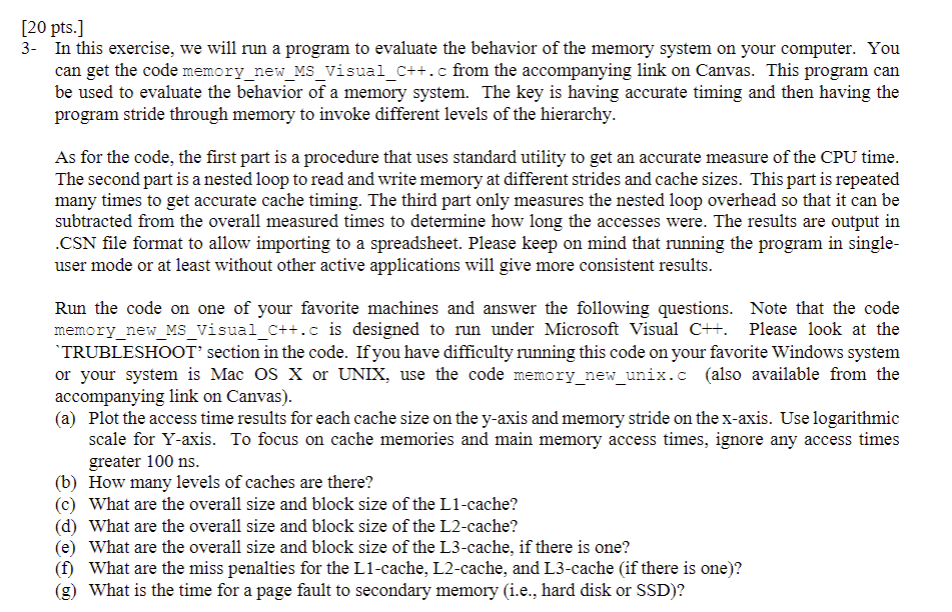
[20 pts. ] 3- In this exercise, we will run a program to evaluate the behavior of the memory system on your computer. You can get the code memory_new_MS_Visual_C++.c from the accompanying link on Canvas. This program can be used to evaluate the behavior of a memory system. The key is having accurate timing and then having the program stride through memory to invoke different levels of the hierarchy. As for the code, the first part is a procedure that uses standard utility to get an accurate measure of the CPU time. The second part is a nested loop to read and write memory at different strides and cache sizes. This part is repeated many times to get accurate cache timing. The third part only measures the nested loop overhead so that it can be subtracted from the overall measured times to determine how long the accesses were. The results are output in .CSN file format to allow importing to a spreadsheet. Please keep on mind that running the program in singleuser mode or at least without other active applications will give more consistent results. Run the code on one of your favorite machines and answer the following questions. Note that the code memory_new_MS_Visual_C++.c is designed to run under Microsoft Visual C++. Please look at the 'TRUBLESHOO T ' section in the code. If you have difficulty running this code on your favorite Windows system or your system is Mac OS X or UNIX, use the code memory_new unix.c (also available from the accompanying link on Canvas). (a) Plot the access time results for each cache size on the y-axis and memory stride on the x-axis. Use logarithmic scale for Y-axis. To focus on cache memories and main memory access times, ignore any access times greater 100 ns. (b) How many levels of caches are there? (c) What are the overall size and block size of the L1-cache? (d) What are the overall size and block size of the L2-cache? (e) What are the overall size and block size of the L3-cache, if there is one? (f) What are the miss penalties for the L1-cache, L2-cache, and L3-cache (if there is one)? (g) What is the time for a page fault to secondary memory (i.e., hard disk or SSD)







